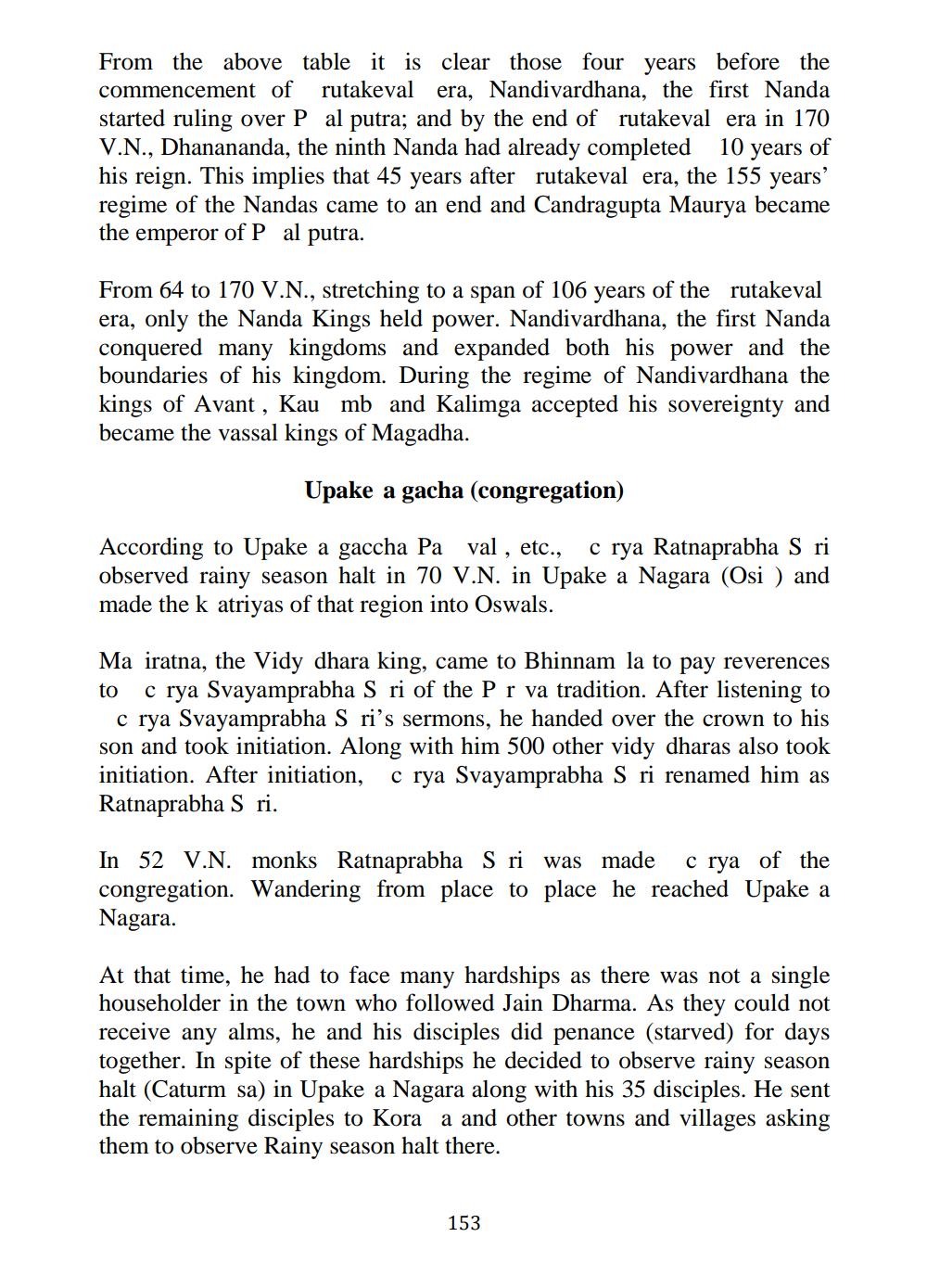________________
From the above table it is clear those four years before the commencement of rutakeval era, Nandivardhana, the first Nanda started ruling over Pal putra; and by the end of rutakeval era in 170 V.N., Dhanananda, the ninth Nanda had already completed 10 years of his reign. This implies that 45 years after rutakeval era, the 155 years' regime of the Nandas came to an end and Candragupta Maurya became the emperor of P al putra.
From 64 to 170 V.N., stretching to a span of 106 years of the rutakeval era, only the Nanda Kings held power. Nandivardhana, the first Nanda conquered many kingdoms and expanded both his power and the boundaries of his kingdom. During the regime of Nandivardhana the kings of Avant , Kau mb and Kalimga accepted his sovereignty and became the vassal kings of Magadha.
Upake a gacha (congregation)
According to Upake a gaccha Pa val , etc., crya Ratnaprabha Sri observed rainy season halt in 70 V.N. in Upake a Nagara (Osi ) and made the k atriyas of that region into Oswals.
Ma iratna, the Vidy dhara king, came to Bhinnam la to pay reverences to crya Svayamprabha S ri of the P r va tradition. After listening to
c rya Svayamprabha S ri's sermons, he handed over the crown to his son and took initiation. Along with him 500 other vidy dharas also took initiation. After initiation, c rya Svayamprabha S ri renamed him as Ratnaprabha Sri.
In 52 V.N. monks Ratnaprabha Sri was made c rya of the congregation. Wandering from place to place he reached Upake a Nagara.
At that time, he had to face many hardships as there was not a single householder in the town who followed Jain Dharma. As they could not receive any alms, he and his disciples did penance (starved) for days together. In spite of these hardships he decided to observe rainy season halt (Caturm sa) in Upake a Nagara along with his 35 disciples. He sent the remaining disciples to Kora a and other towns and villages asking them to observe Rainy season halt there.
153




